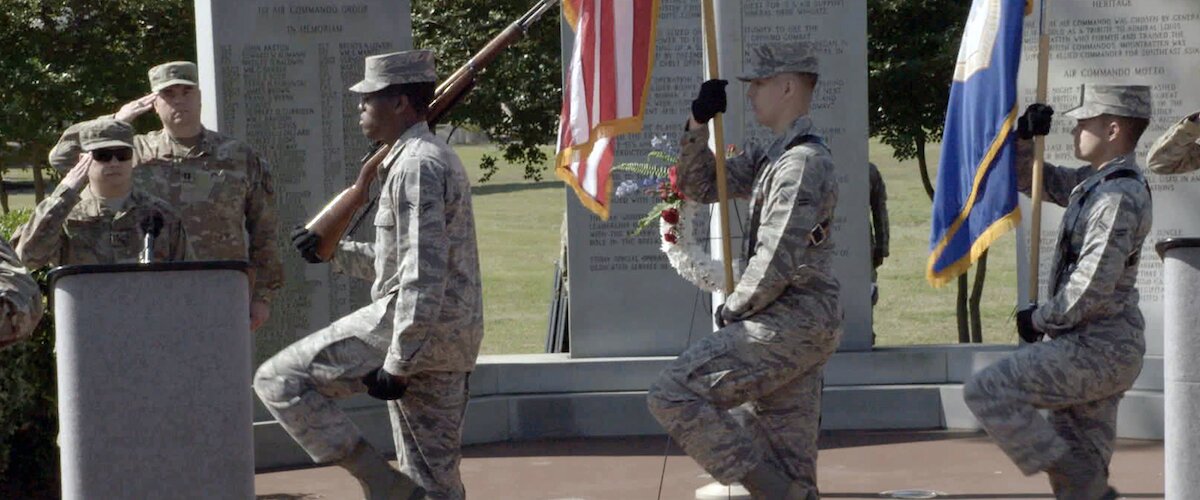One of America’s outstanding documentary filmmakers with a career that stretches back to 1976’s Oscar-winning “Harlan County, USA,” Barbara Kopple is at the top of her game in “Desert One,” a riveting account of President Jimmy Carter’s daring but tragically unsuccessful attempt to rescue 52 Americans held hostage in Iran in 1980. Although the events it chronicles are now four decades in the past, they have a potent, immediate charge in an election year when tensions between and the U.S. and Iran are at another high. And beyond the political implications, this is a terrifically dramatic and very emotional film; understandably, some of the interviewees struggle to maintain composure when recalling their past trials.
“Desert One” actually tells two related stories, which it brilliantly interweaves. One is the story of how the Iranian Revolution, which erupted in late 1978 and led to the flight of the highly unpopular Shah and establishment of a new Islamic government under Ayatollah Ruhollah Khomeini in early 1979, also resulted, several months later, in the storming of the U.S. Embassy by student militants, whose hostage-taking provoked a prolonged and torturous stand-off between the U.S and Iran. The second story concerns the rescue mission Carter launched the following spring, in which American soldiers in several military transport planes and helicopters were to use an area in the Iranian desert designated Desert One as a base from which they would swoop into Tehran and extract the hostages. The ill-fated effort, however, ended in that desolate place, with a loss of eight American lives.
Kopple’s powerful telling of these interlocked stories entailed some notable coups. One is that she gained access to previously unreleased White House tapes (recalling the ones that led to Nixon’s downfall) in which Carter and his circle discuss the mission with military commanders minute by minute as it unfolds, and then as tense hopes turn to shock and heartbreak. Another coup was that she landed an interview with Carter (not an easy thing to do: this writer has tried), who is thoughtful and candid in recalling what he says were the worst events of his life, not just his presidency. Additionally, Kopple got interviews in Iran, including with people involved in the hostage-taking, and one who witnessed the fiery catastrophe in the desert.
The film inevitably evokes certain paradoxes of Carter’s presidency. When he was elected in 1976 (a campaign very entertainingly chronicled in the upcoming doc “Jimmy Carter Rock & Roll President”) he promised hope, renewal, and peace to a nation reeling from the Watergate scandal, Nixon’s resignation and America’s ignominious withdrawal from Vietnam. But though he was the first president to put a strong and enduring emphasis on human rights, he did not encourage opposition to the Shah’s brutal dictatorship. (No doubt this was largely due to Iran’s strategic proximity to the Soviet Union.) In one bitterly comic scene here, Carter, the Shah and their entourages on the White House lawn weep from the teargas fired at demonstrators protesting the Shah’s visit on a nearby street.
All feature-length documentaries dealing with subject matter as vast as this one’s have to make hard decisions regarding what to include and leave out, and while I entirely respect the choices made by Kopple and her team, I wish two aspects of the story had been explored in more depth. One is the 1953 coup—mentioned briefly by an Iranian official—in which the CIA and MI6 overthrew Iran’s democratic government and reinstalled the young Shah, who many Iranians would thereafter regard as an American puppet. (This event is well-treated in Taghi Amirani’s “Coup 53,” also opening this week.) The other aspect is the Carter administration’s reluctant late-Oct. 1979 decision—reportedly at the urging of the likes of Henry Kissinger and David Rockefeller—to admit the Shah to the U.S. for cancer treatment, which led Iranians to fear that they were in for a repeat of 1953. It was, one Iranian says, “a declaration of political war against the people of Iran.”
Evidently sparked by that event, militant Iranian students invaded the U.S. Embassy on Nov. 4 and took its occupants hostage. Khomeini could have instantly ended the siege, but he had reasons—including the fact that the Shah was still at large—to drag out the crisis, and so began a 444-day ordeal that would not only be grueling for the hostages but would provide Americans with an agonizing nightly television spectacle. The hostages Kopple interviews include Kevin Hermening, then a young Marine guard whose mom hit the national news when she popped over to Tehran to visit him (the Iranians allowed her a brief audience with her son, then induced her to make a statement against Carter), and John Limbert and Michael Metrinko, Farsi-speaking U.S. career diplomats. These men testify to the mistreatment inflicted on them, including at least one mock execution, but there are also lighter moments. One clip from Iranian TV shows Ayatollah Ali Khamenei, now Iran’s Supreme Leader, visiting the hostages and being hilariously regaled by Metrinko, who says that Iranians’ reputation for hospitality is all too true and is now being taken to extremes—they simply won’t let their American guests go!
In the spring of 1980, after months of fruitless diplomacy, Carter set in motion Operation Eagle Claw. It was a risky effort—one participant says he was skeptical from the outset because it had “too many moving parts”—but military leaders including legendary Delta Force creator Col. Charlie Beckwith thought it could succeed. From around the U.S., Special Ops soldiers are called away from their families (Kopple interviews several of the wives) and whisked off on a covert mission that sees them undergo some intensive secret training, then ship out for a base in Egypt. The plan is for the transport planes and eight helicopters—six are essential for completing the mission—to fly across southern Iran at night and land at Desert One, whence the choppers would head into to Tehran and free the hostages.
From the first, it’s a spiraling boondoggle. There’s a small road running through the area that was supposed to be little used, but as soon as the Americans are on the ground it’s “like Grand Central,” one recalls: here comes a motorcycle, a busload of religious pilgrims (Kopple interviews one who recalls being a wide-eyed boy witnessing the chaos) and two trucks, one containing fuel that produces a giant explosion when the Americans fire on it. By this time, two helicopters have gone inoperable. When a third falls out of use, the inevitable command is given: “abort.” But then misfortune turns into disaster. A giant dust storm swoops in, and when one chopper tries to take off, the blinded pilot rams into a C-130 with 40 soldiers aboard, causing it to erupt in a giant fireball. Eight Americans perish in the conflagration.
The extended sequence that narrates these events is alternately heart-stopping and gut-wrenching, as dramatically propulsive as any action movie. In addition to her interviews with several participants, Kopple’s telling benefits enormously from Zartosht Soltani’s superb animation, as well as the work of editors Francsico Bello and Fabian Caballero and composer Wendy Blackstone.
After the deaths in the desert, the Americans’ bodies were taken to Tehran to be turned over to the Red Cross for repatriation, but before that happened, the hideously charred and contorted corpses were stripped naked and put on display for the world press, an event overseen by Sadegh Khalkhali, a Stalin-like monster who was responsible for countless summary executions as Khomeini’s “hanging judge.” This horrific act is the tale’s harsh nadir. Back in the U.S, the fallen men were greeted by a stricken and sorrowful nation and their own grieving families, and given tributes that appropriately recognized their patriotism, professionalism and courage.
As starkly tragic as the end of Operation Eagle Claw was, it and the history surrounding it are too little known and deserve to be discovered and contemplated as a way of imagining a future beyond the missteps and misunderstandings that have kept the U.S. and Iranian governments at violent odds for decades. As for Carter’s missteps, it’s hard to disagree with Ted Koppel’s assertion that the president’s signaling Khomeini that he wouldn’t use force as long as the hostages weren’t killed was “as foolish a policy statement as you could make.” Carter’s very un-strategic restraint, in any case, effectively doomed his reelection chances; he was beaten in a landslide by tough-talking Ronald Reagan. But the same cautious course also ended in the hostages being released unharmed. Having the 52 Americans returned safely was Carter’s pre-eminent goal, after all; it’s just too bad the eight men left at Desert One weren’t similarly rescued.
Now playing in virtual and select cinemas.




















